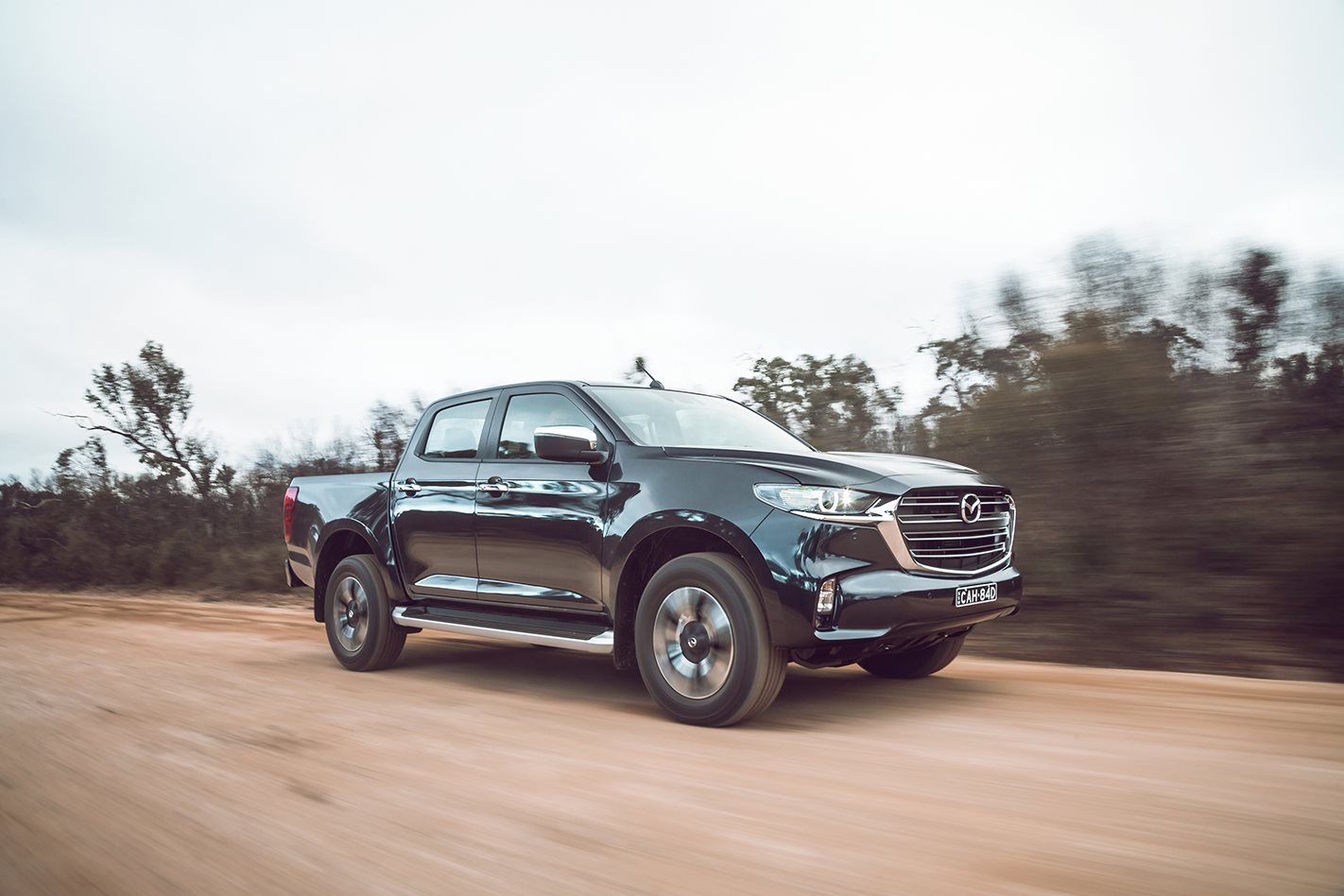Things we like
- Moves to equal class leader (with Isuzu) for safety, driver assistance systems, and connectivity
Not so much
- Engine’s outputs down compared to outgoing model
- NVH
- Stiff suspension tune
- Ride comfort
The Wheels Verdict: There’s no escaping the reality that in terms of power, torque and engine refinement, the new BT-50 actually goes backwards compared to the outgoing model with its Ford-sourced five-cylinder engine.
Mazda is banking on the new ute’s exterior design and strong showing of safety, driver assistance and connectivity being enough to persuade buyers of the new BT-50’s merits.
WHAT IS THE MAZDA BT-50?
The replacement for the outgoing BT-50 dual-cab ute, which was a reskinned Ford Ranger. This time Mazda has aligned itself with Isuzu, and done its own reskin of the new D-Max.
Inside, there are some small spec differences between the models of the two brands, and subtle detail changes.
WHY WE’RE TESTING IT
To see if there’s any difference in engine performance and driving dynamics between Mazda’s reskin of the donor Isuzu D-Max (spoiler alert: there’s not), and to dig through the spec list and cost of extra features to determine which brand delivers the stronger value equation.
? Hello from the future! You can continue reading this story, or you can visit our latest BT-50 Range Review linked below.
REVIEW CONTINUES…

THE MAZDA BT-50 REVIEW
To an outsider, the jumping in and out of bed between car companies must make it look like it’s the ’70s all over again, with swingers’ nights in the suburbs in full flight, and house keys piled high in the bowl.
Toyota and BMW; loved up for the Supra/Z4. Consider Ford and Mazda; they were hot in the cot together for the T6 Ranger/BT-50.
But that was last time; now Mazda and Isuzu have been getting all steamy for introduction the third-gen D-Max and new BT-50.
It’s surely exhausting, but these are the tech- and development sharing partnerships that are inescapable in the capital-intensive auto industry.
But rather than a co-development between Mazda and Isuzu, the new BT-50 is purely a reskin of the new D-Max, with zero Mazda input in terms of mechanicals or even suspension tune.
First, the bad news
So, the core question is: has Mazda made the right call by dropping its Ranger-based ute in favour of Isuzu?
Well, if you start by comparing the basic engine specs, it appears the BT-50 has actually gone backwards.
The Ford-supplied five-cylinder turbo-diesel from the outgoing model boasted an extra cylinder, 200cc more capacity, as well as 7kW and 20Nm higher outputs than the revamped Isuzu engine Mazda inherits with this new generation.
Only the ADR fuel consumption figure moves in a positive direction, dropping from 10L/100km for the outgoing five-pot to 7.7 for Mazda’s new (Isuzu) engine.
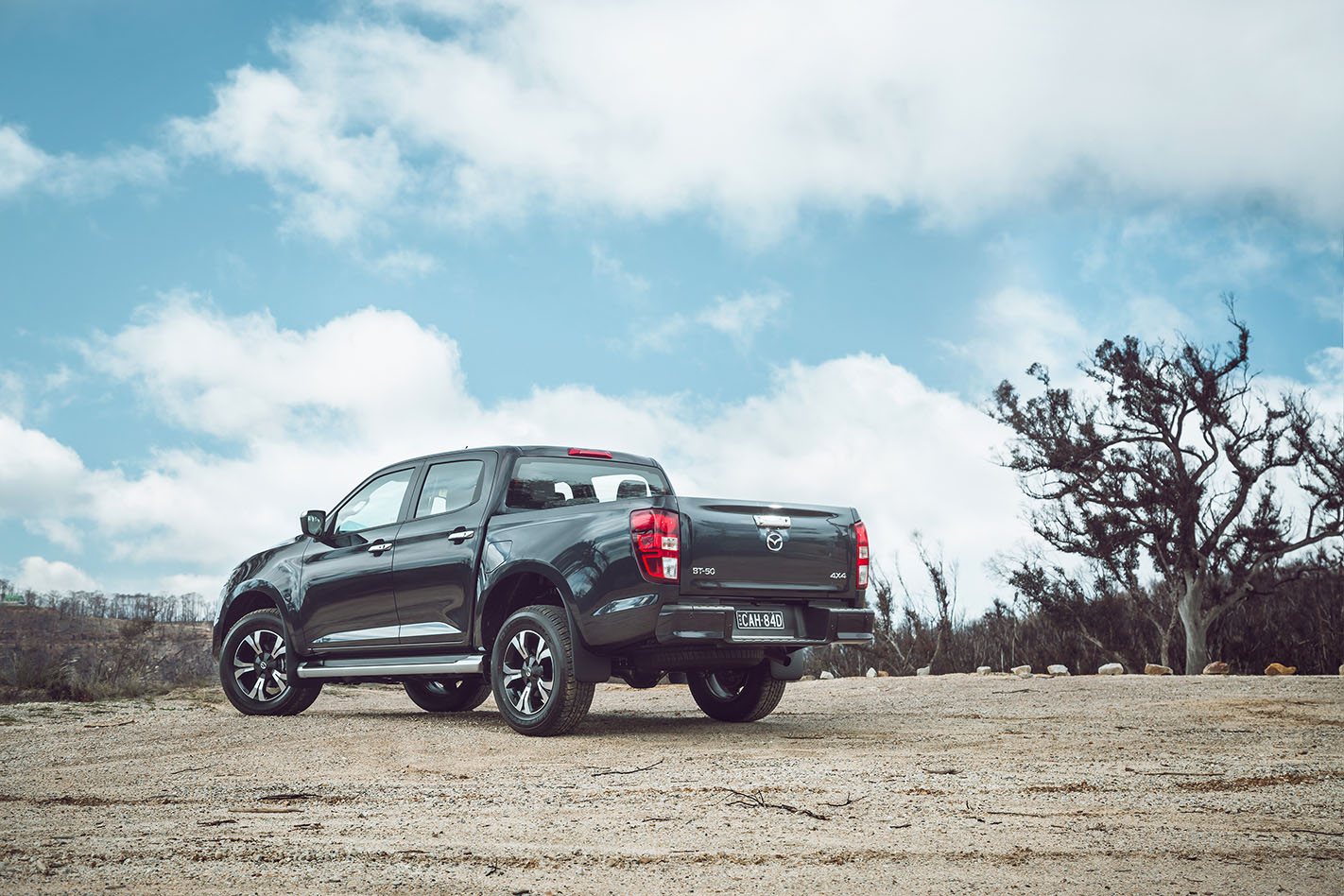
Our tester was a manual XT 4×4, priced at $49,360. First impressions suggest that spending the extra $2500 Mazda charges for the six-speed auto is probably money well spent.
Around town, the clutch action is light and positive, but long, notchy throws of the manual start to wear thin.
If you read our coverage of the D-Max, you’ll know this engine is an extensive reworking of the previous Isuzu 3.0-litre four, not a clean-sheet design.
The block, head, internals and injection system have all been revised to arrive at outputs of 140kW and 450Nm, but it’s hard to imagine owners trading out of the old five-cylinder BT-50 being thrilled at the reduced outputs of this new generation.
It’s also not an especially persuasive lump, with a quite clattery idle and no great willingness to work higher up in the rev range. At least it’s quite torque-rich down low, so there’s rarely any great imperative to rev it hard.
That max torque output of 450Nm is available from 1600rpm to 2600rpm, which is pretty much its optimum operating zone, and there’s 400Nm on tap between 1400rpm and 3250rpm, so ample grunt then.
Beyond 4000rpm, though, is not its happy place.
Then there’s the chassis tune, which, exactly as with D-Max, often feels stiff-legged and unyielding on Aussie roads, especially at low speed.
The near-constant head-toss and general restlessness make comfort elusive, with excessive rebound damping speed continually making itself felt, especially when the rear tray is unladen.
At least the electrically assisted steering is light and consistent, although the rack needs 3.7 turns lock to lock, which is actually around half a turn more than the old BT-50, meaning you need to adapt to some serious arm-twirling in slow urban driving.
But there is good news too
Where the new BT-50 really makes its most significant advances, then, are with safety, driver aids, and connectivity.
As with D-Max, BT-50’s AEB system uses twin 3D cameras to more precisely detect vehicles, pedestrians, and cyclists, or tell if you’re about to turn across traffic in front of an oncoming car.
Lane-keep assist, blind-spot monitoring and speed sign recognition (linked to the radar cruise) all feature, as does wireless Apple CarPlay.
And there are now eight airbags, including a centre bag between the front occupants that debuted on D-Max.
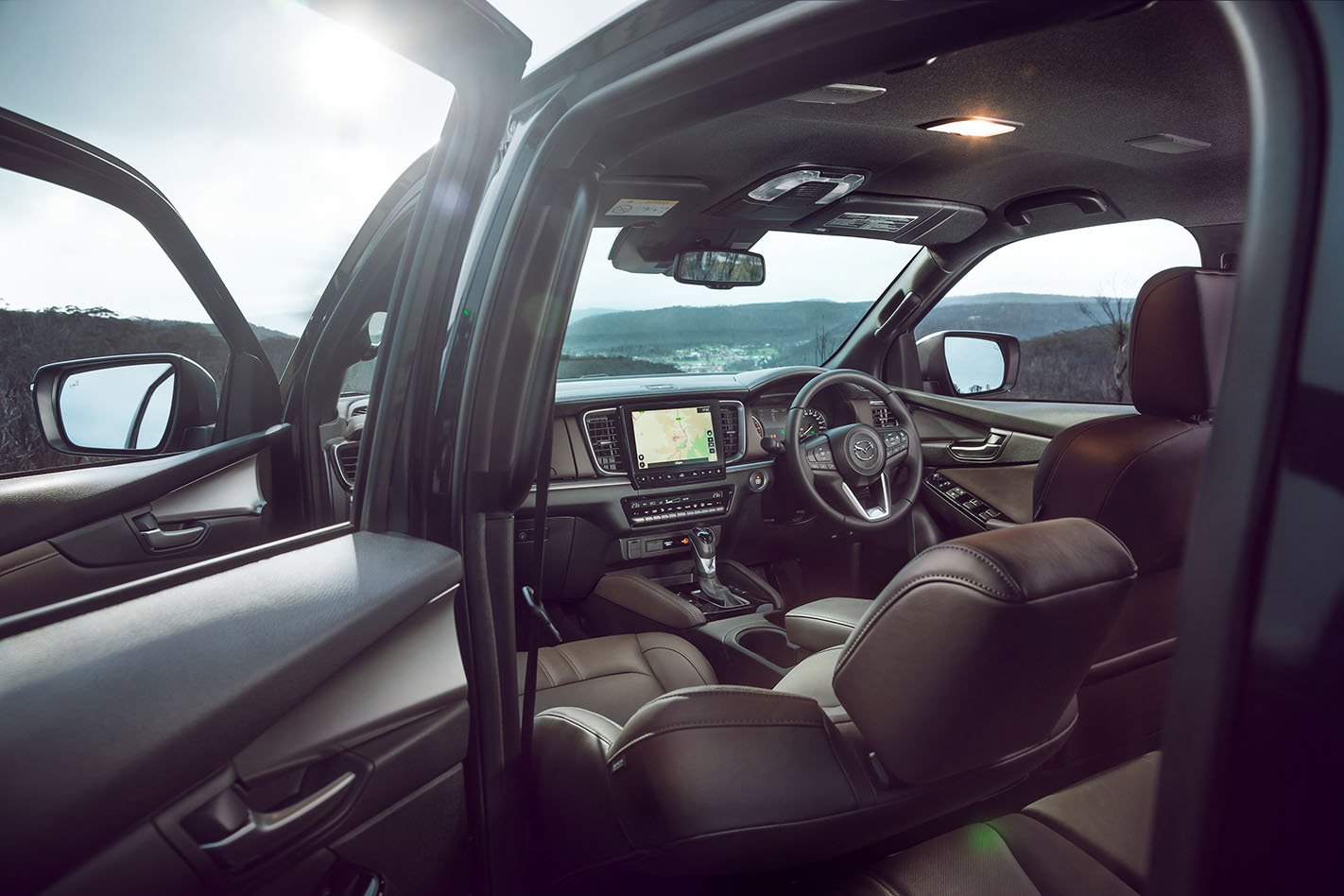
How much for the 2020 Mazda BT-50?
Mazda offers two body styles (dual-cab chassis or dual-cab pick-up), a choice of rear- or AWD, and manual and auto transmissions, with three spec grades: XT, XTR and GT.
It’s an 11-variant line-up with prices starting at $44,090 and topping out just under $60K. In most cases, the BT-50 has slightly more standard equipment than the closest equivalent D-Max variant.
For example, keyless entry and start is standard on XTR and GT spec BT-50s, but only on the top-spec D-Max X-Terrain.
And at the top end, Mazda’s flagship GT features heated leather seats and heated exterior mirrors; features not available on the D-Max.
As for pricing anomalies between the two brands, these include Mazda charging a $2500 premium for automatic transmission; Isuzu charges $2000.
But when it comes to metallic paint, Mazda doesn’t charge extra; Isuzu hits you for $500. But you do get an additional year’s warranty with Isuzu.
Beyond that, though, it’s a case of ‘choose your brand affiliation and haggle hard’.
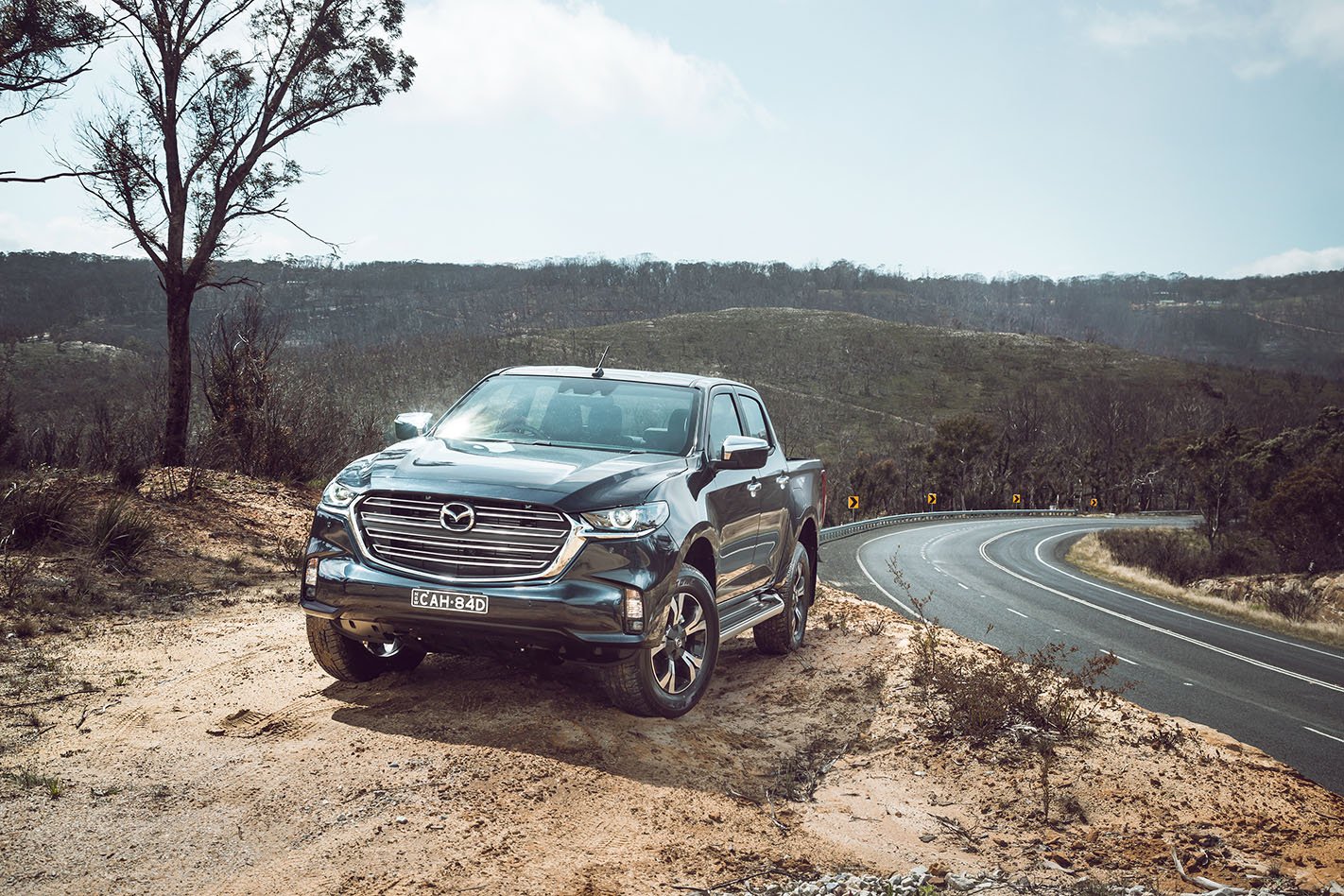
MAZDA BT-50 RIVALS
Ford Ranger, Toyota Hilux, Isuzu D-Max, Mitsubishi Triton, Nissan Navara
MAZDA BT-50 XT 4X4 MANUAL SPECS
- Engine: 2991cc 4cyl, dohc, 16v, turbo diesel
- Max power: 140kW @ 3600rpm
- Max torque: 450Nm @ 1600-2600rpm
- Transmission: 6-speed manual
- Weight: 2030kg
- 0-100km/h: 10.0sec (estimated)
- Economy: 7.7L/100km
- Price: $49,360
- On sale: Now
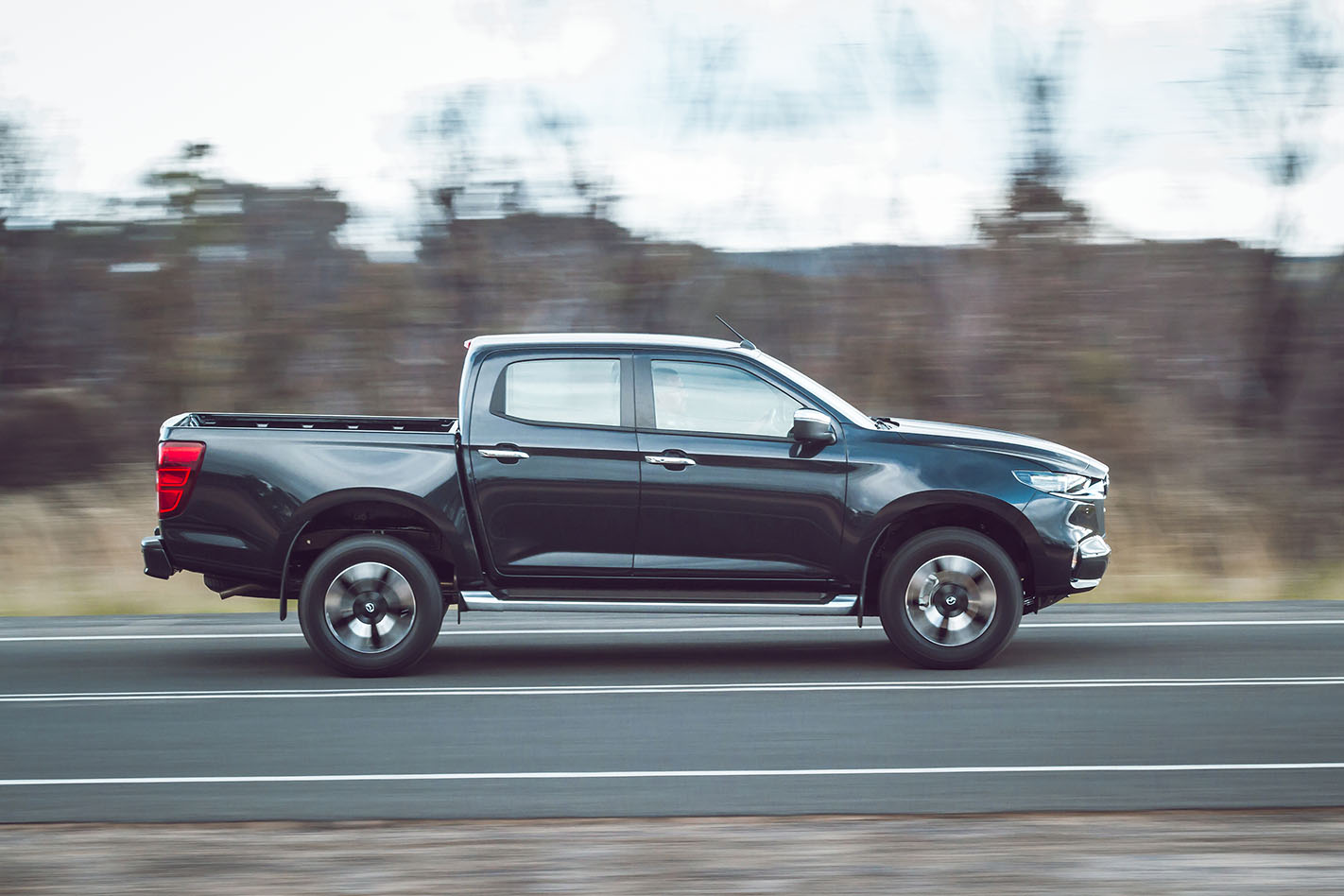
Things we like
- Moves to equal class leader (with Isuzu) for safety, driver assistance systems, and connectivity
Not so much
- Engine’s outputs down compared to outgoing model
- NVH
- Stiff suspension tune
- Ride comfort


